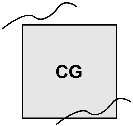5.A.viii. Maps for Parts of Asia and South America
|
Primary Developer:
|

|
Army Map Service (now National Imagery and Mapping Agency
|
|
Title:
|

|
Maps
|
|
Publication Date:
|

|
1950s and 1960s
|
|
Bibliographic Citations:
|

|
Army Map Service (AMS), various dates. South America 1:1,000,000. World (South America) 1:1,000,000. World (South Pacific) 1:1,000,000. East Indies 1:1,000,000. Army Map Service, Washington, D.C. (Map series, with global coverage but various
regional names, consistent with International Map of the World specifications.)
U.S. Army Topographic Command (USATC), various dates. World (South America) 1:1,000,000. U.S. Army Topographic Command, Washington, D.C. (Map series consistent with International Map of the World specifications.)
Defense Mapping Agency (DMA), various dates. World (Asia) 1:1,000,000. Defense Mapping Agency Topographic Center, Washington, D.C. (Map series consistent with International Map of the World specifications.)
|
|
Post-processing:
|

|
Geographical Survey Institute (GSI, Japan) and U.S. Geological Survey (for GTOPO30).
|
Bibliographic Citation
for Post-processed DEM:
|
*
|
AMS, GSI, and USGS, 1997. 30"-gridded DEMs from AMS Maps. USGS, EROS Data Center, Sioux Falls, South Dakota.
|
|
Source/Lineage Category:
|

|
15
|
* Primary reference citation for this source
Paper maps at a scale of 1:1,000,000 produced by the Army Map Service (AMS) were acquired and digitized by the Geographical Survey Institute of Japan. Contours (with intervals of 100, 150, 300, and 500 meters), spot heights, drainage lines, and
coastlines for some islands of southeast Asia and some small areas in South America were delivered to USGS as digital vector cartographic data sets. USGS used ANUDEM-based contour-to-grid techniques to create DEMs from these digitized map areas.
That procedure is described in Section 5.A.vii.

|
Cell-center registration; contour-to-grid value computed.
Graphic describing georeferencing and sampling for AMS map conversion.
|

Plate 26.

Plate 27.
Click on each image
to view larger size.
|

|
Histogram analysis of AMS maps divides the source into maps for South America (Plate 26) and for Asia (Plate 27). Plate 26 shows prominent
sharp spikes and broader peaks at about 150m, 200m, 500m, and 1000m increments. This suggests relatively sparse contour information.
Plate 27 shows prominent sharp spikes and broader peaks at approximately 300m and 500m increments, plus at 100m, 150m, and 200m. This suggests a combination of contour values in 1000ft and 500m increments, with
subsidiary contour values at lower elevations. It also suggests relatively sparse contour information.
|


Return to Report Introduction
|





